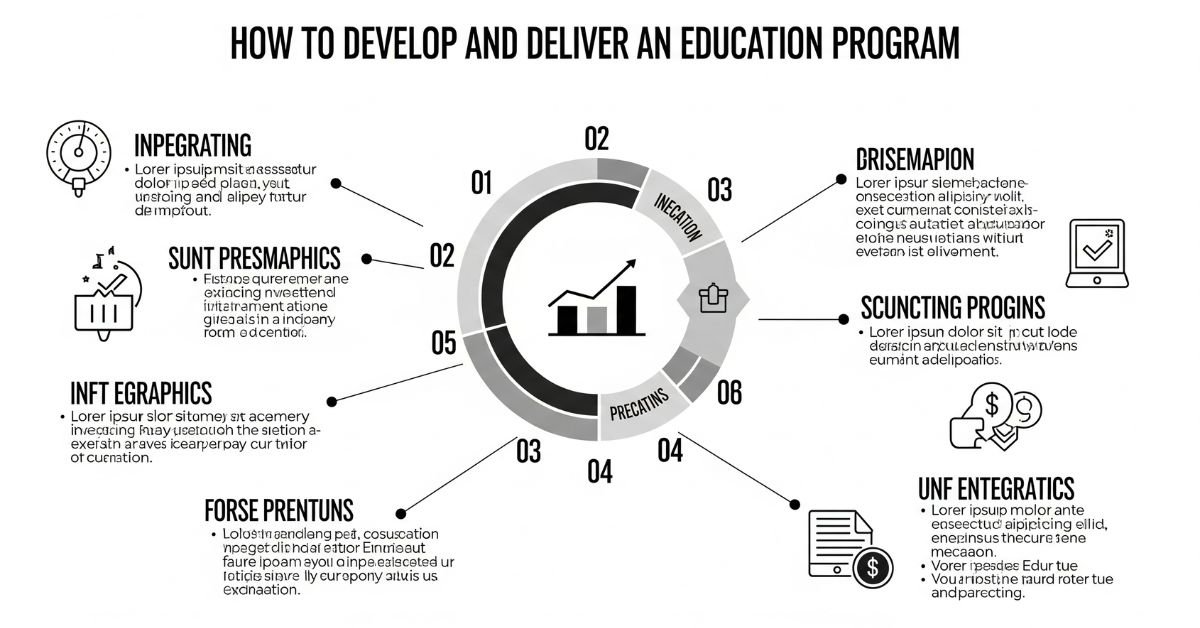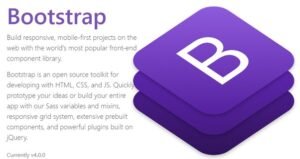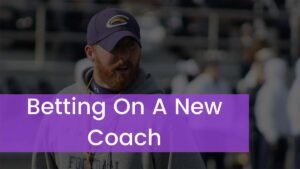If you’re curious about how to create and deliver an education program, you’re not alone. For schools, workplaces, or community centers, creating a solid program requires thoughtful planning. A good program can transform lives, build people up, and fix real issues.
It’s to ensure that people learn, retain, and apply it. This article demonstrates every step in how to create and implement an education program in plain language, profound understanding, and actual outcomes. It also contains helpful tools, facts, and examples
Know the Purpose and the People
Before doing anything else, you need to understand why the program is needed. A good education program begins with a clear purpose. What problem is it solving? Who will benefit from it? You must know who your learners are. Are they teenagers? Working adults
Talk to people. Ask questions. Use surveys or interviews. Try to see the world through their eyes. When you know your learners’ age, background, and goals, you can build something that fits them. That’s the key to making something useful, not just impressive on paper.
You will Might : How to Use a CSS Stylesheet in HTML
Start With a Needs Assessment
Now that you know who your learners are, it’s time to find out what they actually need. This is where the needs assessment comes in. It’s a way to collect real information about what skills or knowledge gaps exist.
Use interviews, tests, or group discussions to gather data. You might be surprised by what you learn. Maybe your learners struggle with basic concepts, or maybe they want more advanced skills. Write everything down. Analyze it. Then use this data as your base for the entire program.
Set Clear Learning Objectives
Every strong program begins with clear goals. These are called learning objectives. Without them, you’re just tossing information into the wind. Objectives help learners know what they’ll get out of the program. They also guide your content.
Use simple, action-based words. Instead of saying “understand finance,” say “calculate a monthly budget.” That’s measurable. Good goals are SMART: specific, measurable, achievable, relevant, and time-bound. This keeps your program focused and prevents it
Build the Curriculum Thoughtfully
This is the heart of how to develop and deliver an education program. You now create lessons, topics, and materials. Your curriculum must match your objectives. It should move from simple ideas to more complex ones. This is called scaffolding.
Design activities that get learners involved. Try role-playing, problem-solving, or real-world case studies. Don’t just rely on lectures. Variety keeps people engaged. Also, think about how long each module should be. Shorter, focused sessions work best.
Organize Your Resources
Without the right tools and people, your program might fall apart. You need to plan your resources early. Think about what software or equipment is needed. Will you teach online or in person? Who will teach the content? Are they trained?
Good programs also plan budgets in advance. Cost everything out: staff, materials, space, printing, platforms. This will save you trouble later. Make sure your team knows their roles. Set up timelines and checkpoints. This turns a big project into a step-by-step journey.
Read More About : How to Center Image in HTML Without CSS
Common Education Program Resources
| Resource Type | Example Items | Estimated Cost |
| Human Resources | Teachers, trainers, mentors | $2,000–$10,000 |
| Digital Tools | LMS, video tools, online quizzes | $500–$3,000 |
| Learning Materials | Textbooks, handouts, guides | $300–$1,500 |
| Space & Equipment | Classrooms, internet, projectors | $1,000–$5,000 |
Design Assessments That Actually Work
Now you test if your learners are learning. This is where assessment comes in. Don’t wait until the end of the test. Use small quizzes, quick reflections, and group work along the way. These are called formative assessments.
At the end, use a final test or project to measure success. These are summative assessments. They show if your program met its goals. Use rubrics or checklists to keep grading fair. Feedback is also key. Let learners know how they’re doing.
Test the Program First
Before launching it for everyone, do a pilot. This means trying the program in a small group. It helps you spot problems early. Maybe the lessons are too long. Maybe the tech doesn’t work well. You won’t know until you try it.
Choose a group that’s similar to your target audience. Watch how they interact. Ask them questions. Record results. This step saves you from big failures later. A good pilot makes the full launch much smoother and smarter.
Deliver the Program With Energy
Now comes the big moment—delivery. This is where you bring your plan to life. Make sure all materials are ready and your team is trained. Teach with energy. Be present. Engage your learners.
Check in often. If things aren’t working, adjust. Be flexible. Not everything will go as planned, and that’s okay. Let learners ask questions. Give support. Make the experience valuable. A good delivery makes the hard work behind the scenes truly worth it.
Common Challenges in Delivery and Quick Fixes
| Challenge | Quick Fix |
| Learner confusion | Add visuals, simplify content |
| Low engagement | Add games, real-life examples |
| Time running short | Cut non-core topics, speed up pacing |
| Tech issues | Always have a Plan B |
Evaluate Everything That Matters
Once the program ends, it’s time to see if it worked. Evaluation is not just about grades. It’s about the whole experience. Look at test results, feedback, and overall learner satisfaction. Did learners meet the objectives? Did they enjoy the journey?
You can use forms, focus groups, or interviews. Dig deep into the feedback. Don’t take it personally. Use it to improve. A good evaluation tells you what to repeat, what to skip, and what to fix. It makes your next version stronger.
Improve and Keep Going
Learning never ends—and neither should your program. Take everything you learned from feedback and apply it. Make updates. Add new modules. Remove what didn’t work. Try new tools or teaching styles.
You might also grow the program. Add more learners. Train more teachers. Or offer certification. Keeping the program alive and fresh shows your commitment to quality. It also helps learners see real value in what you offer. That’s how you turn a good program into a great one.
Program Improvement Checklist
| What to Review | Method Used | Next Steps |
| Learner feedback | Surveys, interviews | Add or adjust content |
| Test scores | Data review | Strengthen weak areas |
| Delivery experience | Team debriefs | Improve instruction |
| Budget and resources | Cost analysis | Reallocate as needed |
Think About Credentials and Recognition
This is optional, but powerful. If your program leads to a certificate, badge, or official recognition, people will value it more. Work with certifying bodies or institutions if needed. Make sure your assessments match their standards.
Even digital badges can make a difference. Learners feel proud. Employers respect it. And your program gains trust. Offering recognition can make your education program stand out in a crowded world.
Collaborate With Experts and Stakeholders
Bringing others into the process can be a game-changer. If you’re working on a program that covers health, finance, or job training, talk to people in those fields. Subject experts help make the material accurate and relevant. This makes the content richer and more useful for learners.
Stakeholders like school leaders, company managers, or community heads can give feedback early on. They may also help with funding or support. A strong partnership builds trust. It also ensures the program aligns with real-world needs, not just theory.
Use Technology to Improve Learning
Today, tech isn’t a luxury—it’s a tool that makes learning better. When building a program, consider how technology can help. Video content, online quizzes, and virtual classrooms open up access and allow learners to go at their own pace.
Use Learning Management Systems (LMS) like Moodle or Google Classroom to track progress. You can upload resources, assign work, and check results all in one place. Tech helps with engagement too—gamification, badges, and leaderboards make learning fun.
FAQ”s
How long does it take to develop an education program?
It depends on size and complexity, but small programs may take 3–6 months. Large ones can take a year or more.
What is the most important part of program development?
Clear learning objectives are crucial. Without them, the program lacks focus and direction.
Do I need special software to run an education program?
It helps, especially for online learning. Platforms like Moodle, Google Classroom, or Canvas work well.
Can I run a program without a big budget?
Yes. Use open-source tools, free resources, and community spaces. Creativity goes a long way.
What if my first version fails?
Don’t worry. Use feedback, improve, and try again. Every good program is built through testing and refining.
Conclusion
Now you know exactly how to develop and deliver an education program that works. You’ve seen how to plan it, test it, deliver it, and improve it. Each step matters. Each step brings you closer to a program that teaches, empowers, and grows with time. Keep learning, stay flexible, and trust the process. The best programs don’t happen overnight—but they do last when done right.




